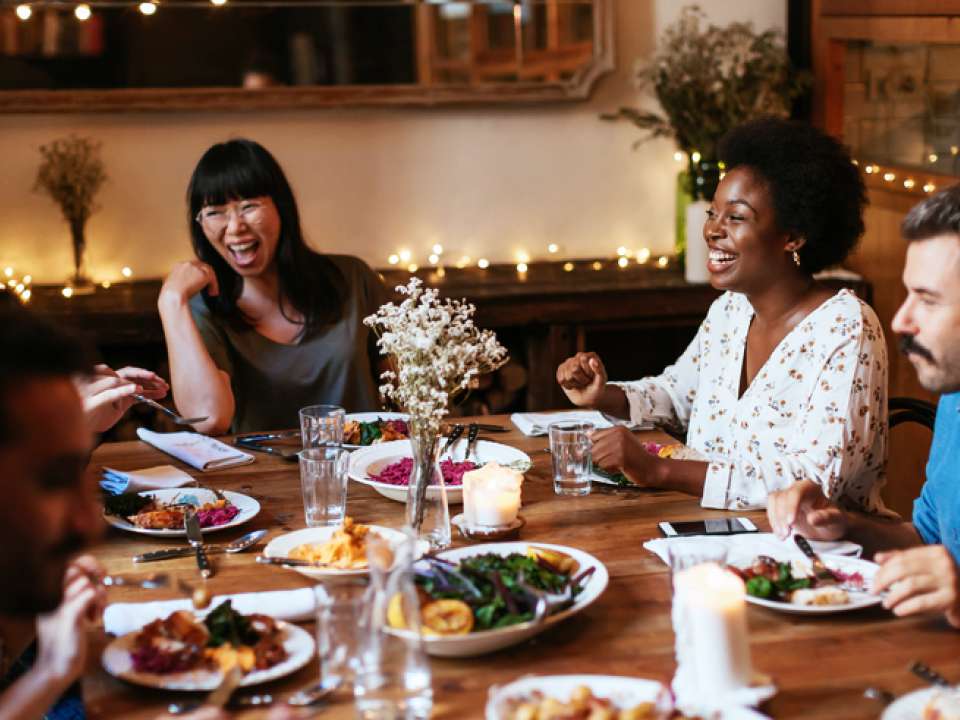
For parents, the scariest thing about Halloween often isn’t a horror movie, haunted house or spooky decoration. It’s the fear that your child will have a late-night burst of energy from consuming copious amounts of sugar.
But fear not. There are a few simple ways to keep your little candy gremlin at bay (and, no, they don’t involve keeping your kid out of sunlight or refraining from feeding them after midnight).
Choose candy that isn’t just sugar
While it’s important to limit your kiddo’s sugar intake, completely cutting sugar out of their diet — especially on Halloween — is pretty much impossible.
However, there are ways you can make smarter choices when it comes to Halloween candy. When purchasing it, opt for chocolate bars that contain a source of protein or fat, like peanut butter or pieces of nuts or even nougat.
“It helps slow down how quickly the sugar goes into their bloodstream,” says Vanessa Imus, a registered dietitian at UW Medicine.
In contrast, candy that is mostly sugar boosts blood sugar more quickly, which triggers insulin to step in and clear away the excess.
“Then you end up with a kid that’s got super low blood sugar, then they’re moody, cranky and hard to put to bed,” Imus says.
Another bonus is that chocolate candy often has fewer artificial ingredients like food coloring. Plus, who doesn’t like chocolate?!
Keep an eye out for sneaky added sugars
Nutrition labels now list how many grams of added sugar are in food, which is great for helping you keep track of how much sugar your kid is eating. Still, some candy may appear lower in sugar than it actually is.
Sugar isn’t just listed as sugar. It can also be listed as things like dextrose, corn syrup, agave nectar and many, many more. In fact, there are at least 61 different names for sugar that could be included in Halloween candy.
Ingredients are listed by weight, Imus says, so make sure not to just check the first few. Hidden sugar could be hiding out further down on the list.
Avoid candy with food coloring
You’ve probably heard that lots of sugar can create a so-called “sugar high” that gives kids a burst of chaotic energy. That’s not actually true, Imus says.
“Research shows that there’s no substantial evidence that sugar causes hyperactivity,” she says.
Instead, blame food dyes for your tiny human’s sudden speediness. Research has shown a correlation between food coloring and hyperactivity — though the correlation doesn’t necessarily mean that the dyes cause energy bursts, just that they’re linked somehow.
Have a game plan
If trick-or-treating is part of your kid’s Halloween plans, make sure you set some ground rules ahead of time, like how many houses they can go to and how many pieces of candy they’re allowed to eat that night.
It’s not a bad idea to establish some rules for yourself, too, Imus says.
“Keep candy packaged and out of sight, because if you see it laying on the table and you pass by when you’re hungry, it’s like, ‘Oh, I’ll have one fun-sized candy,’ but then it becomes another and another and it adds up over time,” she says.
Not only does this model healthy behavior for your kiddo, it keeps you from turning into an adult version of a candy gremlin.
Serve a hearty meal beforehand
Similar to how eating candy with protein in it helps sugar enter the bloodstream more slowly, serving your kid a healthy, protein-rich meal before trick-or-treating will make sure the sugar from the candy doesn’t affect them all at once.
“It’s going to last them a while, so if you throw the high-sugar candy on top of it, it’s not going to give them this huge spike in sugar,” Imus says.
Healthy fats and high-fiber carbs are also helpful at slowing down sugar uptake, Imus explains.
Try a candy trade-in
If your kiddo is an adept trick-or-treater or your neighbors are especially generous, you’ll probably be faced with a giant bag of candy by the end of the night that you’re not sure you want your kid to eat.
Instead of taking candy away without giving them anything in return, offer a trade, Imus says.
“Maybe you know your child wants this specific toy or game or they want to go to the zoo. Have a trade-in for that activity. Say, ‘OK, this will cost you 10 pieces of candy,’” she suggests.
It’s a win-win for both of you.

 Healthy ideas for your inbox
Healthy ideas for your inbox





